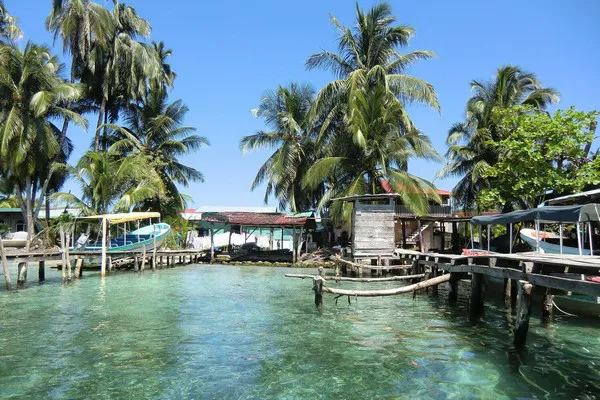Central America is a land of mesmerizing beauty, boasting lush rainforests, pristine beaches, active volcanoes, and diverse wildlife. With such a rich natural tapestry, it’s challenging to pinpoint a single country as having the most beautiful nature in the region. Each nation offers its unique allure and ecological wonders, making Central America a paradise for nature enthusiasts and adventurers alike. In this article, we will explore some of the top contenders for the title of the country with the most beautiful nature in Central America, delving into their breathtaking landscapes, biodiversity, and the overall appeal that makes them standout destinations for nature lovers.
1. Costa Rica: A Biodiversity Hotspot
Costa Rica is often hailed as a biodiversity hotspot, and for a good reason. Despite its small size, the country is home to an astounding array of flora and fauna, making it a dream destination for nature enthusiasts and wildlife lovers. The country boasts numerous national parks and protected areas, providing ample opportunities for exploring its diverse landscapes.
Corcovado National Park, located on the Osa Peninsula, is known for its rich biodiversity, with a staggering number of plant and animal species. Tortuguero National Park, on the Caribbean coast, is famous for its nesting sea turtles, and Arenal Volcano National Park offers stunning views of one of Costa Rica’s most active volcanoes.
2. Belize: A World of Water and Wonders
Belize’s natural beauty extends both above and below the water’s surface, making it a top contender for the most beautiful nature in Central America. The country is renowned for its vast network of pristine coral reefs, making it a mecca for snorkelers and divers. The Great Blue Hole, a UNESCO World Heritage site, is a massive underwater sinkhole that captivates visitors with its crystal-clear waters and vibrant marine life.
On land, Belize offers lush jungles, ancient Maya ruins, and diverse wildlife. The Cockscomb Basin Wildlife Sanctuary is the world’s first jaguar preserve, providing a unique opportunity to spot these elusive big cats.
3. Panama: Where Oceans and Rainforests Collide
Panama’s geographical location, with coastlines on both the Atlantic and Pacific Oceans, contributes to its extraordinary natural diversity. The country is known for its lush rainforests, home to an array of plant and animal species. The Darien Gap, a vast and remote jungle, is one of the most biodiverse regions on the planet.
The San Blas Islands, located in the Caribbean Sea, offer a paradisiacal setting with white sandy beaches and crystal-clear waters. In contrast, the Coiba National Park, a UNESCO World Heritage site, presents a haven for marine life, including humpback whales, hammerhead sharks, and sea turtles.
4. Guatemala: Land of Volcanoes and Lakes
Guatemala’s dramatic landscapes, featuring volcanoes, lakes, and ancient ruins, contribute to its reputation as a country with captivating natural beauty. The country’s highlands offer stunning vistas of volcanoes, such as Acatenango and Pacaya, which can be climbed for breathtaking sunrise views.
Lake Atitlán, surrounded by picturesque villages and verdant hills, is considered one of the most beautiful lakes in the world. The Tikal National Park, a UNESCO World Heritage site, showcases impressive Mayan ruins amidst the dense rainforest, providing an awe-inspiring experience for history and nature lovers alike.
5. Honduras: A Hidden Gem of Natural Splendor
Honduras may be lesser-known as a nature destination in Central America, but it offers a hidden gem of natural splendor. The country is home to the second-largest barrier reef in the world, the Mesoamerican Barrier Reef System. The Bay Islands, including Roatán, Utila, and Guanaja, are renowned for their excellent diving and snorkeling opportunities.
Inland, Honduras features vast cloud forests and protected areas like Celaque National Park, where visitors can hike to the country’s highest peak. The Rio Platano Biosphere Reserve, a UNESCO World Heritage site, is a haven for biodiversity, housing numerous species of mammals, birds, and reptiles.
6. Nicaragua: Land of Volcanic Wonders
Nicaragua’s landscapes are dominated by a chain of volcanoes and immense freshwater lakes. The Apoyo Lagoon, a volcanic crater lake, offers a serene escape surrounded by lush forests and abundant wildlife.
The Masaya Volcano National Park allows visitors to experience an active volcano up close and personal, creating a thrilling and unforgettable adventure. Ometepe Island, formed by two volcanoes rising from Lake Nicaragua, offers a unique destination for hiking, wildlife spotting, and cultural experiences.
7. El Salvador: A Pocket of Natural Treasures
El Salvador may be the smallest country in Central America, but it packs a punch when it comes to natural treasures. The country’s Pacific coastline boasts pristine beaches and consistent surf breaks, attracting surfers from around the world.
El Imposible National Park, a remote and biodiverse area, is named after the challenging terrain that deterred early explorers. Today, it attracts adventurous hikers and nature lovers keen to discover its unique flora and fauna.
Conclusion
Central America is a treasure trove of natural wonders, making it difficult to crown a single country as having the most beautiful nature in the region. Each country offers its unique blend of biodiversity, landscapes, and cultural allure, making them standout destinations for nature enthusiasts and adventurers. From Costa Rica’s biodiversity to Belize’s underwater wonders and Panama’s diverse environments, Central America provides a kaleidoscope of natural beauty waiting to be explored. Whether you seek lush rainforests, pristine beaches, or active volcanoes, each country in Central America promises an unforgettable and enriching experience for travelers seeking communion with nature’s splendor. So, pack your bags, embark on an adventure through the captivating landscapes, and get ready to be mesmerized by the beauty of Central America.

